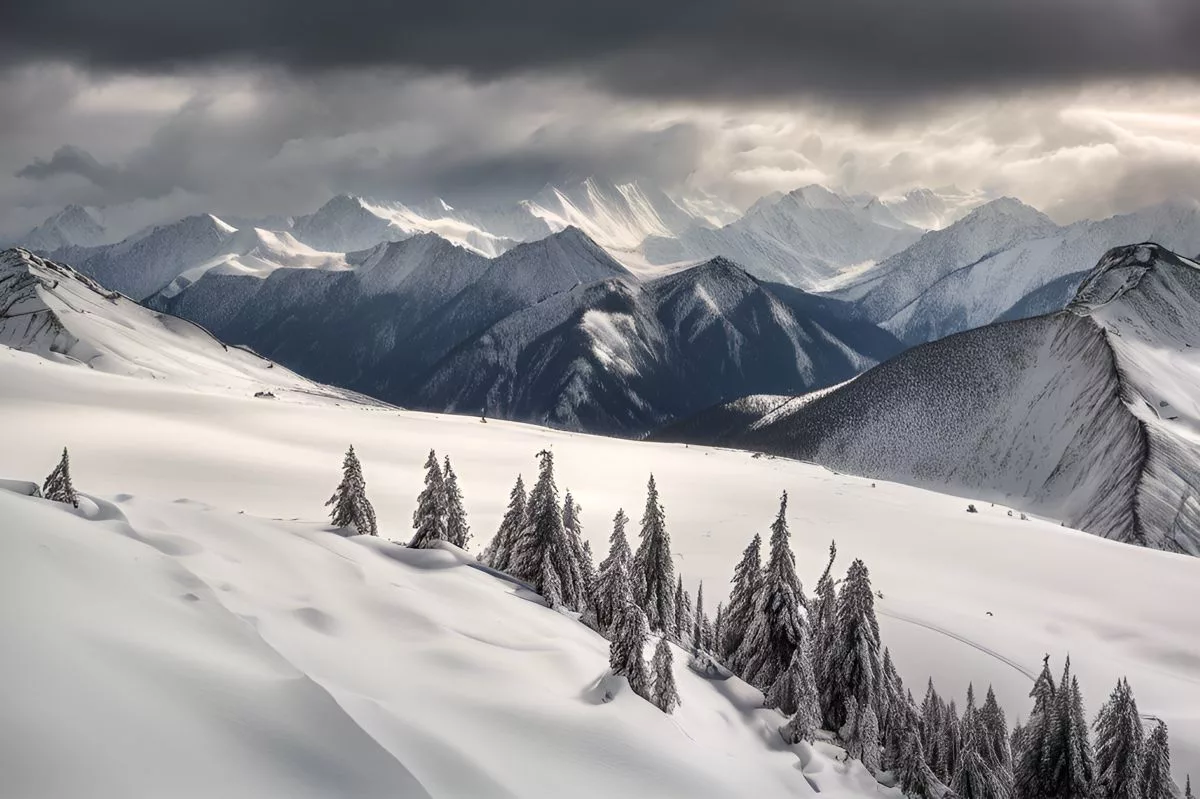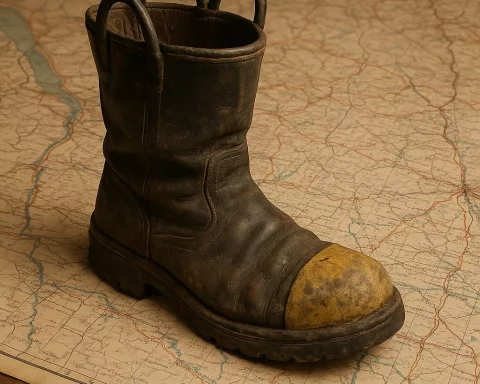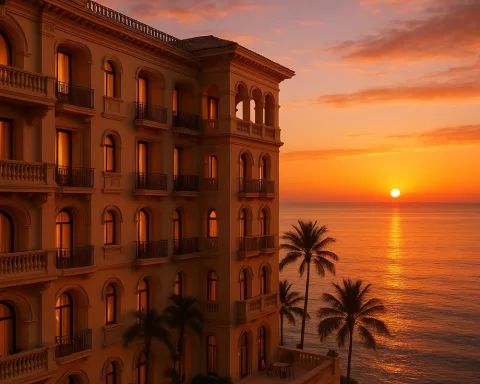South Africa is about to feel winter’s icy breath with light snow expected from September 29 to October 1, 2024, in its high-altitude areas. The Western Cape, Eastern Cape, and southern KwaZulu-Natal will see cooler temperatures and strong winds, making travel tricky. As snowflakes dance down, locals are reminded of the beauty and challenge of nature’s wonders, transforming their landscapes into magical winter scenes. This chilly spell not only brings a touch of enchantment but also highlights the spirit and resilience of communities facing these wintry conditions together.
What is the forecast for snowfall in South Africa?
Light snow is expected in the high-altitude regions of South Africa from September 29 to October 1, 2024. Areas like the Western Cape, Eastern Cape, and southern KwaZulu-Natal will experience cooler temperatures and possible gale-force winds, impacting daily life and travel.
Winter’s Icy Embrace
South Africa is on the cusp of another cold spell as light snow is forecasted in the high-altitude regions of the Eastern Cape and southern KwaZulu-Natal. The South African Weather Service (SAWS) has issued this alert, following a significant snowfall that disrupted travel and daily life in the Free State, KwaZulu-Natal, and Eastern Cape from September 19-22, 2024. Although the forthcoming snowfall is not expected to be as severe, it marks the lingering presence of winter.
The snowfall is anticipated to begin in the Western Cape early on Sunday, September 29, gradually moving eastward towards KwaZulu-Natal by Monday morning. By Monday evening, the snow will start to diminish in the Western Cape and the western parts of the Eastern Cape, but it will persist in the eastern parts of the Eastern Cape and southern KwaZulu-Natal until Tuesday, October 1. The confluence of an upper trough system and a ridging high-pressure system will bring significant cooling to the escarpment regions, including the Western Cape and southern KwaZulu-Natal.
Understanding these weather patterns requires a dive into the mechanics of atmospheric dynamics. An upper trough system often guides cold air masses, significantly impacting weather conditions. When this phenomenon aligns with a high-pressure system at the surface, it can lead to substantial cooling and precipitation. This system will bring a marked drop in daytime temperatures over the Western Cape starting Sunday, extending to the Eastern Cape and KwaZulu-Natal by Monday.
The Arrival of Chill and Precipitation
On Saturday afternoon, a cold front accompanied by an upper trough will reach the Western Cape, bringing showers and rain to the southwestern parts of the province. Isolated showers and thundershowers will occur over the western and central interior regions. As the cold front advances eastward, onshore flow along the south coast will sustain showers and rain into the evening hours.
As this weather system progresses east, it will encounter South Africa’s escarpment regions, which are particularly vulnerable to rapid cooling due to their high elevation. On Sunday, the ridging high-pressure system trailing the cold front will further drive down surface temperatures, especially in the high-altitude areas of the Western Cape and southern Northern Cape.
By Monday, maximum temperatures in the Eastern Cape and southern KwaZulu-Natal are expected to drop below 10 degrees Celsius. Strong to possibly gale-force winds will lash the south coast, creating significant marine swells between four and six meters from Sunday into Monday morning. These conditions will be especially pronounced from Cape Agulhas to Gqeberha (formerly Port Elizabeth), extending to East London by Monday morning.
Snowflakes and Swells
From September 29 to October 1, daily rainfall accumulation is predicted to remain below 30mm. Light snowfalls will occur in the high-altitude regions of the Western Cape, Northern Cape, Eastern Cape, and southern KwaZulu-Natal. Specifically, light snow is expected in the high-lying areas of the Western Cape and the southernmost parts of the Northern Cape. Coastal communities and marine enthusiasts should brace for significant ocean swells, particularly between Saldanha Bay and Plettenberg Bay on Sunday morning, extending to Port Shepstone by Monday afternoon.
The unfolding weather scenarios in South Africa can be appreciated through historical and artistic lenses. The Romantic era, for example, celebrated nature’s majestic and often tumultuous beauty. The raw power of gale-force winds and towering ocean swells evoke the sublime landscapes immortalized in the works of artists like J.M.W. Turner and Caspar David Friedrich. These masterpieces convey the humbling experience of witnessing nature’s grandeur—an experience South Africans may find mirrored in the coming week.
Seasonal Transition
As the ridging high-pressure system moves eastward, temperatures will plunge further over the escarpment regions of the Eastern Cape and southern KwaZulu-Natal. Strong to gale-force winds and towering ocean swells, already defining features of the impending weather, will continue to impact these areas. Light snowfalls will start on Monday in the Eastern Cape and southern KwaZulu-Natal, persisting into Tuesday morning.
However, the high-pressure system’s influence will wane by Tuesday afternoon, leading to a quick recovery in daytime temperatures across eastern South Africa from Sunday into Monday. This shift marks the transition from winter to the warmer seasons, bringing a sense of relief and renewal.
Stories of Resilience
Beyond scientific explanations and artistic musings, local anecdotes add a richer dimension to this narrative. Farmers in high-altitude regions often share stories of unexpected snowfalls transforming their landscapes into winter wonderlands. While these events disrupt routines, they also inspire a deep appreciation for the natural world’s unpredictable rhythms.
In coastal towns, the strong winds and high swells shape the lives of residents and seafarers alike. The anticipation of gale-force winds often fosters community spirit, as people come together to secure boats, homes, and livelihoods. These preparations, though routine, highlight the resilience and camaraderie that coastal living nurtures.
A Multifaceted Experience
In essence, the forthcoming weather event offers a multidimensional experience. It merges the precision of meteorological science with the awe-inspiring beauty of nature’s forces. It also serves as a backdrop for personal stories and collective resilience. As South Africans brace for light snow and cold conditions, they engage in a dynamic interplay between the natural world and human activity.
FAQ: An Enchanted Winter in South Africa
What is the forecast for snowfall in South Africa?
Light snow is expected in the high-altitude regions of South Africa from September 29 to October 1, 2024. Areas like the Western Cape, Eastern Cape, and southern KwaZulu-Natal will experience cooler temperatures and possible gale-force winds, impacting daily life and travel.
Which regions are expected to see snowfall?
The snowfall is anticipated mainly in the high-altitude regions, including the Western Cape, Eastern Cape, and southern KwaZulu-Natal. Specific areas within these provinces, particularly the higher elevations, are likely to be affected.
What weather conditions accompany the snowfall?
Along with light snow, these regions will experience a significant drop in temperatures and strong to possibly gale-force winds, particularly along the south coast. Coastal areas will also see considerable marine swells, with waves expected to reach between four to six meters.
How does the weather system affect everyday life and travel?
The combination of snow, strong winds, and cooler temperatures can disrupt travel plans and daily life. Commuters should be cautious, especially on the roads, as conditions may become icy or hazardous in affected areas. Travelers are advised to stay updated on weather alerts and road conditions.
What should residents in coastal areas prepare for?
Residents in coastal areas should brace for strong winds and significant ocean swells, especially from Saldanha Bay to Plettenberg Bay. This could impact marine activities and coastal infrastructure, so it’s advisable to secure boats and property against potential storm damage.
How do these weather changes reflect seasonal transitions in South Africa?
The impending winter weather is part of a natural seasonal transition. While colder conditions will prevail from September 29 to October 1, the ridging high-pressure system is expected to bring a quick recovery in daytime temperatures afterward, signaling a shift towards warmer seasons as the country moves away from winter.








